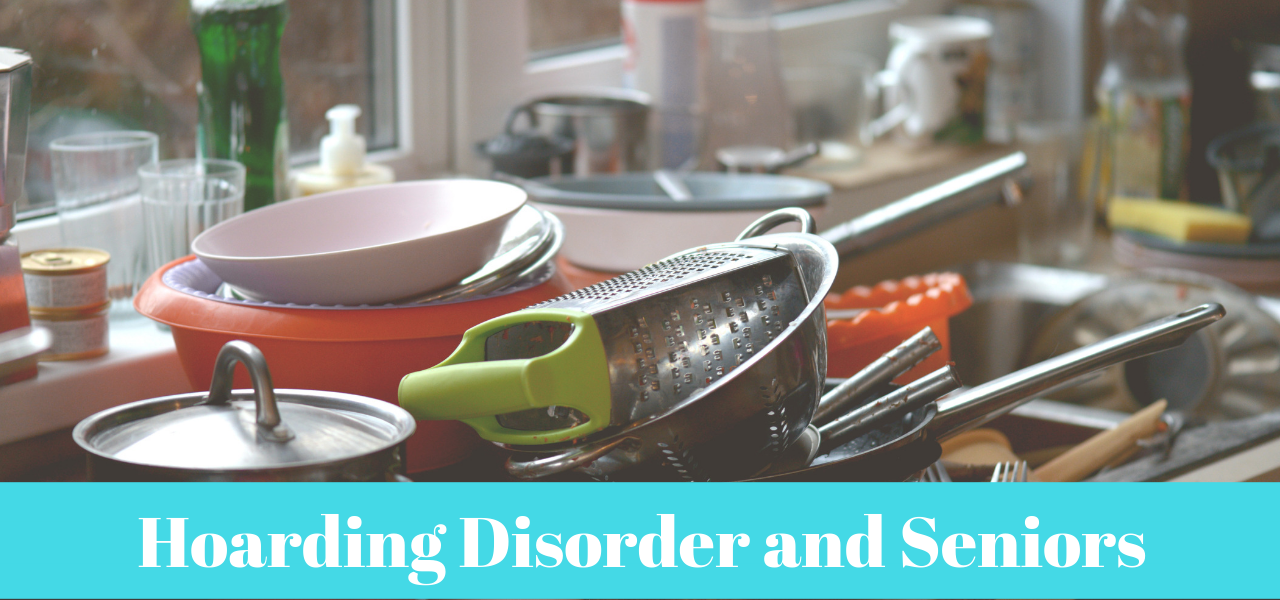
While television shows and documentaries have brought hoarding behaviors to the spotlight in recent years, the disorder itself is nothing new. Learn more about why seniors are at a higher risk for hoarding, the dangers that can accompany hoarding, and what to do if your loved one exhibits hoarding behaviors.
What is Hoarding?
The American Psychiatric Association defines hoarding disorder as “excessively saving items that others may view as worthless.” A person who hoards will have a hard time parting with possessions, leading to clutter that disrupts living or workspaces. Different than collecting, where a person looks for a specific item, a person who hoards will save random items and store them haphazardly.
While hoarding disorder occurs in 2% – 6% of the population, it is more common among seniors with three times as many adults between the ages of 55 and 94 affected by hoarding compared to adults 34 to 44 years old.
Symptoms of Hoarding
- A lasting problem with giving away possessions, regardless of their value
- A perceived need to save items
- Distress linked to parting with possessions
- Objects fill, block, and clutter living spaces so they are unusable
- Keeping shades drawn and increased social isolation
- Unsanitary conditions
- Obsessive shopping
- Keeping stacks of newspapers, magazines, or junk mail
- Moving items from one pile to another without throwing anything away
- Perfectionism
- Limited or no social interaction
Hoarding is dangerous for any age, but especially for seniors. Hoarding behavior can increase the risk of falls for seniors, block first responders in an emergency, and even cause disease from unsanitary living conditions. Hoarding can also lead seniors to refuse caregiving help for fear of their stuff being disturbed and even create a fire hazard.
Experience Leisure Care Senior Living
Causes of Hoarding in Seniors
While the exact cause of hoarding in seniors is unclear, there are other disorders that can put seniors at a higher risk for developing hoarding behaviors. These disorders include:
- Obsessive-compulsive disorder
- Anxiety disorders
- Personality disorders
- Depression
- Addictions
- Post-traumatic stress disorder
- Suffering a traumatic loss
- Aging with mobility limitations
- Dementia
- Schizophrenia
These disorders and triggers are not causes of hoarding. They can merely increase the risk of hoarding behaviors. While severe hoarding is most common in adults around the age of 50, hoarding tendencies can begin as early as 11 years old. People who go on to develop hoarding disorder struggle with indecisiveness and anxiety and have often experienced a stressful or traumatic event.
Helping a Senior Who Hoards
If your senior loved one has hoarding disorder you know it’s not a sustainable way to live. You know that it can place your loved one in danger and you want to help them. Here are 5 ways to help your loved one with hoarding disorder.
1. See beyond the clutter
Hoarding disorder is really not about hoarding. There is a deeper issue that needs to be addressed. It’s more than just cleaning a space or hiring a housekeeper or organizer. It’s a true disorder and ignoring the disorder by addressing its symptoms can make the problem worse and threaten your relationship with your loved one.
2. Be there
People who have hoarding disorder are often socially isolated and have minimal quality relationships in their lives. Be there for your loved one, remind them that you are not leaving, and remember that they have a hoarding disorder but hoarding is not their entire identity. Doing this can create a safe space for your loved one to ask for help.
3. Start small
It may be tempting to walk in, clean up the whole place, and then deal with the consequences. Instead, encourage your loved one to start small, to clear just one space in the home – even if it’s just a drawer. If that seems insurmountable, encourage your loved one to throw out a piece of mail. Make small goals and celebrate them, building momentum as you go.
4. Encourage your loved one to be in control
Avoid the temptation to take over the cleaning process. Ask your loved one how you can help and discuss boundaries in his or her space. This will show your respect and help reduce his or her anxiety about you disturbing their things.
5. Seek professional help
Because hoarding is more than being messy and can be downright dangerous, you may need to find professional help for your loved one – especially if your loved one hoards animals. Cognitive behavioral therapy and medication have been successful in treating some cases of hoarding disorders. Support groups can also help, reducing feelings of social isolation and shame.
Does your senior loved one hoard? How do you help him or her cope with hoarding behaviors? Share your stories with us in the comments below.
Find a Leisure Care Community
Better with age, exceptional with us! Come and see how Leisure Care communities are helping seniors rediscover (and sometimes reinvent) themselves.








